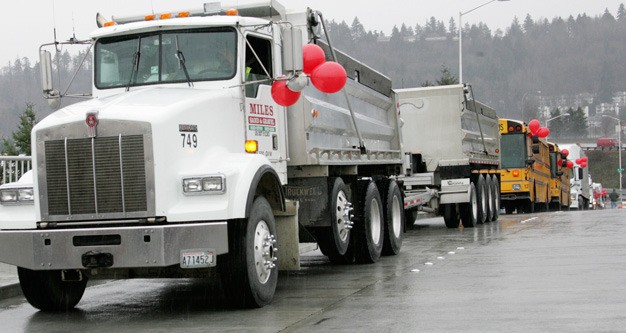Kent city officials will consider forming local improvement districts (LIDs) to help fund two major construction projects along South 212th and South 228th streets to separate street and railroad traffic.
LIDs are additional property tax fees charged to property owners who would benefit from the street improvements. The LIDs along South 212th and 228th streets would impact commercial property owners and not residential property owners.
The state Freight Mobility Strategic Investment Board once again has put the city on notice that it might lose previously approved grants from the board of $13.2 million for the projects along South 212th and 228th streets if the city doesn’t show it has a plan for local funding as well to help pay for construction.
The estimated costs for a grade separation along South 212th Street at the Union Pacific (UP) tracks is $27 million while the South 228th Street project at the UP tracks would cost about $25 million, said Tim LaPorte, city public works director. The city has numerous state and federal grants for the projects, but needs to raise about $16 million for 212th and $8.4 million for 228th. More state grants could reduce the LID costs.
“We were asked by the freight mobility board to give them an update and status report on where we are,” said Doug Levy, a state lobbyist hired annually by the city, at a May 6 City Council workshop. “There are a few different things we could do to show local commitment because the board really wants to know that there’s some local commitment to help fill out the funding packages.”
The board has set aside a $3.25 million grant for the South 228th Street project and another $10 million for grade separations along South 212th Street at the UP and BNSF tracks. The board meets May 30 in Vancouver to consider giving Kent more time to come up with local funding packages.
“We got some positive feedback from the board and we think the chances are good they will defer any decision until November,” Levy said.
Kent’s previously received other extensions over the last several years from the board, but the city still doesn’t have a funding plan.
“The big picture is the board will meet on May 30 and they have been very clear to us if we don’t come up with some money they are going to cancel our grants,” said Tom Brubaker, interim city chief administrative officer. “We feel if we go to them in May and explain to them that this council is seriously considering local funding, including a local improvement district, that we will have a shot at least at getting an extension until November. We will be representing to the board that our council is on board with considering a LID.”
The council agreed informally with that stance.
LaPorte said the city could form one LID to pay for improvements since the business and commercial property owners along the streets would benefit or it could form separate LIDs for each project. He said traffic is delayed anywhere from 90 minutes to more than two hours per day waiting for trains at the crossings.
The council knows it will have to persuade property owners in the industrial and commercial areas, as well as the Kent Chamber of Commerce, that LIDs are the way to go.
“The key to making this successful if we go down this road is to make sure the community understands what’s at stake,” Councilman Dennis Higgins said. “We’re talking about $13.2 million worth of (freight board) grants that are immediately at stake. But if those grants are rescinded that means a total of $20 million goes away because of other commitments (from the railroads and other sources).
“If we do pursue this, I feel strongly to make it successful we need to engage in an educational campaign with the chamber in particular but reaching out as broadly as we can to all business interests and the community at large to make sure they understand why we are going down this road.”
A group of residents overturned an attempt by the council to form a LID last year to help pay for Southeast 256th Street improvements. The council instead used $2 million in business and occupation (B&O) taxes to help pay for the $7.1 million project. Higgins said the LIDs for the grade separation projects represent a different approach.
“That (256th) was a group of citizens living in condos and along some large apartment complex owners and it didn’t take very many signatures to get that overturned,” Higgins said. “Here we’re dealing with a broader base, similarly sized landowners. We still need to reach out to them and make sure they understand the benefits they will receive from these projects.”
Councilman Jim Berrios said if the council decides to go with LIDs along South 212th and 228th streets, he wants more information about who is paying for what.
“One of the things in the communication that we have to be sensitive to is that when we look at this picture of the LID boundaries, those are the folks that are paying the B&O taxes already,” Berrios said.
Funds from the B&O, which brings in about $5 million per year, also could be used to help pay for the grade separation projects. LaPorte said about $2 million from the B&O would go toward the 212th project and $1 million to South 228th.
If the city does get funding for the projects, it takes about two years to construct a grade separation, LaPorte said. Crews would separate vehicles from trains by moving a street either over or under the railroad tracks.
Talk to us
Please share your story tips by emailing editor@kentreporter.com.
To share your opinion for publication, submit a letter through our website https://www.kentreporter.com/submit-letter/. Include your name, address and daytime phone number. (We’ll only publish your name and hometown.) Please keep letters to 300 words or less.

